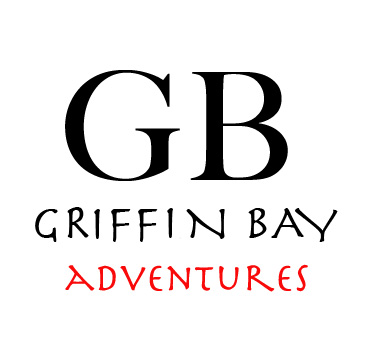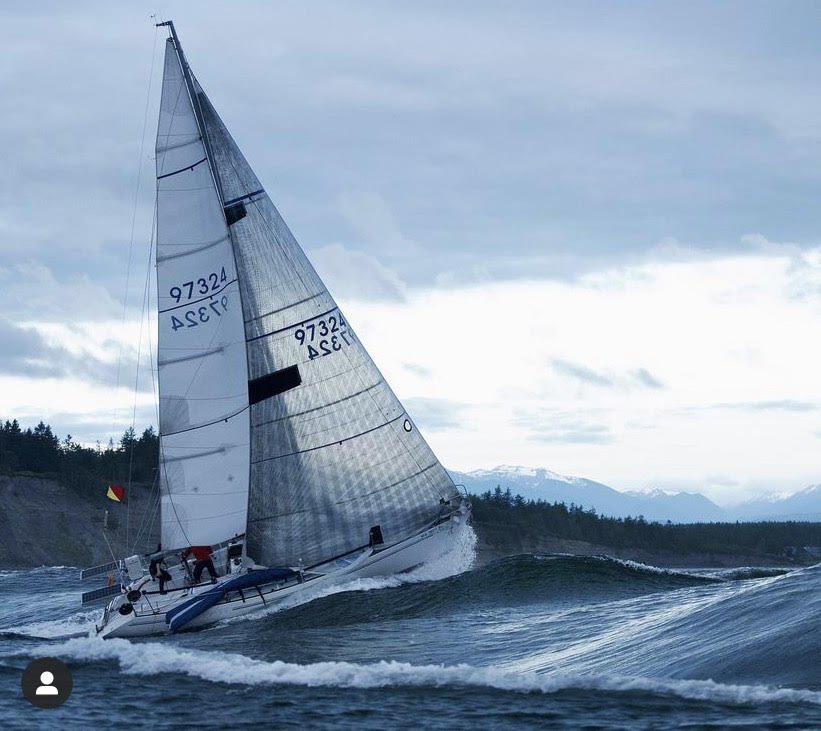Update from the Captain himself. Received via email at 8:22am Thursday June 16th.
I'm writing from Victoria BC where my crew and I are spending our last hours ashore for what will be about a week of sailing as we head up the outside of Vancouver Island to Ketchikan Alaska in this year’s Race to Alaska. We’ve removed the Diesel engine per this race's requirements and designed and fabricated a double recumbent peddle drive unit that drives the boat’s existing folding propeller. The boat is a Soveral 33 built in 1986 and one of the oldest boats in the race. Her mast is 47 feet tall and she weighs 6500 pounds. We have a water ballast system where we can pump 1000 pounds of seawater onto the windward side of the boat to make up for our lack of crew. These boats were made to be sailed with twice the crew that we have aboard. The good side of this is that there are only 8 stinking feet aboard. The start is at noon today and is a LeMond-style start where the racers run down the dock to their boats and paddle out of the harbor. Once clear of the channel, they hoist their sails and either turn right to go up the outside of the island or left to go up the inside. The boats going up the outside have had to go through a rigorous inspection process to be allowed to transit this exposed water where little assistance is available. We have participated in a few offshore races, so the boat was already equipped with more than the r2ak inspectors required. We have a tracker device onboard that will post our position to the tracker page with a slight delay, so people can check in on where the boats are. I will add that these divices are fallible and it isn’t unheard of for them to run out of batteries. So if you see a boat's beacon disappear, don’t be too alarmed. We have an EPIRB which is a much more reliable beacon linked directly with the Coast Guard and rescue service. We also have a 6-person life raft and some other expensive safety stuff.
Having had a wonderful shake-down sail on the way over from Port Townsend, we were able to fix the final elements of our water ballast system. While in Victoria, we’ve had beautiful weather and the good fortune of getting a plotter and anemometer installed, thanks to our friends at Anchor Marine Electrical.
We are all feeling good about the boat and the team and the forecast. Everyone has been asking if we plan to go on the outside and the answer I can finally say after looking at the most recent forecast is yes. The big water suits us better and the captain will sleep better knowing the rocks are far away. This race is such a mix of boats and types of people and it’s been great sharing the docks with everyone these past days. We wish the best of luck to everyone and hope we have no more instances like what we saw on the first leg. As skippers and racing crews, we have to sail our boats as though we were the only ones on the water. We have to sail our own boat to the best of its ability and perhaps most importantly we have to be aware of the limitations of our boats and crew and sail accordingly. Personally, I think one of the more rewarding things about remote sailing is the feeling of satisfaction one gets from this sort of independence. You can feel isolated in the best way while also feeling a sense of camaraderie that you seldom get in this modern world.
Riding the Ebb tide from Port Townsend before the wind picked up shortly after and we tacked to starboard and hoisted the little jib and sketed the rough water before tacking back to port and making it al the way to vic on one tack. Credit: R2AK photographer Jim Meyers @vertizonphoto
Our last-minute crew replacement a veteran of the race and the youngest to compete it Odin Smith will be an asset aboard.
PT on the pumpout after the marina filled with twice as many boats as the previous year they ran the race.
Our arrival to Victoria from Port Townsend in the gale-force winds that day








